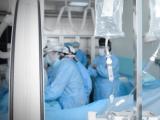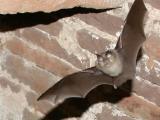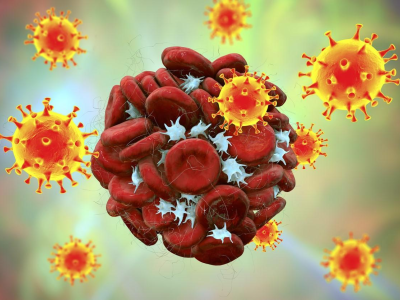Editor's note: This story was revised on May 4 to clarify information about the case-patients' animal exposures.
May 3, 2013 (CIDRAP News) – Saudi Arabian officials and the World Health Organization (WHO) reported three more novel coronavirus (nCoV) cases today in the same area of Saudi Arabia as seven cases reported yesterday, raising worries about possible person-to-person transmission.
Saudi Arabia also revealed today that all 10 case-patients have or had underlying health conditions. That, along with yesterday's report that the seven patients were in the same hospital, suggested the possibility of a hospital cluster. Today's reports did not specify whether the three new case-patients are all in one hospital or in the same one as the earlier patients.
Ziad A. Memish, MD, Saudi Arabia's deputy minister for public health, reported that one of the three new patients is a 53-year-old woman who got sick Apr 27 and is in stable but critical condition.
The other two patients are a 50-year-old man and a 33-year-old man, both hospitalized but doing well, Memish reported via ProMED-mail, the online reporting service of the International Society for Infectious Diseases. The respective illness-onset dates for those two patients were Apr 30 and Apr 28.
Five of the seven case-patients reported yesterday died, and the other two are in critical condition.
The WHO said in a statement today that all three of the latest patients were in critical condition, contradicting Memish's report. The agency also said preliminary information was that at least two patients are from the same family, a detail not provided by Memish.
"The three patients are from the same location as reported" in yesterday's WHO statement on the seven earlier patients, the WHO said. The area is Al-Ahsa province in eastern Saudi Arabia.
Memish said no illnesses have been found in any healthcare workers exposed to the latest patients. Investigations of family contacts for three of the cases are to be completed May 4, and the rest will be done when authorities gain access, he added.
The new cases raise the global count of nCoV illnesses to 27, including 16 deaths, the WHO reported.
Memish's report reveals that 6 of the 10 latest case-patients are in their 50s. All seven patients reported yesterday have or had "multiple comorbidities," while the three newest patients are listed as having "comorbidity" or "comorbidities," he wrote. None of those conditions are specified.
Memish's report today described the seven cases reported yesterday as follows:
- A 50-year-old man, Apr 14 illness onset, died Apr 19
- A 24-year-old man, Apr 17 onset, in critical but stable condition
- An 87-year-old man, Apr 17 onset, died Apr 28
- A 58-year-old man, Apr 22 onset, in stable but critical condition
- A 94-year-old man, Apr 22 onset, died Apr 26
- A 56-year-old man, Apr 22 onset, died Apr 30
- A 56-year-old man, Apr 22 onset, died Apr 29
The age and gender profile of the latest 10 cases bears a strange resemblance to the mysterious pattern seen in H7N9 influenza cases in China: mostly older and male.
Neither Memish nor the WHO statement mentioned whether the three latest patients had any exposure to animals. On May 2 the WHO said the seven earlier patients had had no known animal exposures. The source of nCoV remains a mystery, though some of the previous patients had visited farms before they got sick.
The ability of the virus to spread form person to person also remains unclear, though such transmission occurred in at least one previous family cluster, in the United Kingdom earlier this year.
Marion Koopmans, DVM, PhD, of the National Institute of Public Health and the Environment in the Netherlands told CIDRAP News via e-mail today, "All patients had multiple comorbidities, so were already in poor health. An earlier message stated that all patients were in the same hospital. Therefore, this may be a hospital cluster, as we have seen for SARS [severe acute respiratory syndrome], which then immediately would imply person to person transmission, unless some common exposure occurred (food? some medication?).
"However without more details, this is all speculative. What we need to know is dates of hospitalization versus onset of illness," she added. She is chief of virology in the institute's Laboratory for Infectious Diseases and Screening.
Michael T. Osterholm, PhD, MPH, director of the University of Minnesota's Center for Infectious Disease Research and Policy, which publishes CIDRAP News, agreed that the available information suggests the possibility of a hospital cluster.
He said the comorbidities might be a general risk factor for getting infected and sick with the virus, or they could suggest a common exposure for all the patients. "Healthcare is surely one of the areas where people are there because of comorbidities," suggesting the possibility of common exposure to the virus in a healthcare setting, he said. "We look forward to getting more information from the Saudis.
"If it's healthcare-related, that obviously poses some real challenges, because healthcare played a very important role in accelerating the SARS situation in 2003," he said. "But we don't know that yet."
Osterholm also observed that the median age of the latest group of patients is 56, which is older than the median for the country. He said it's not clear whether that means older age is a risk factor for getting infected in the first place or for getting severely ill once infected.
"Based on what we see with comorbidities and age and all one hospital, it suggests there's some common exposure that's really important," he said. "If animals are not involved, the only likely sources are human. I think what this really is begging for is more transparency on the part of the Saudis."
The first known cases of nCoV occurred in a hospital cluster in Jordan in April 2012, though the illnesses were not identified as nCoV until much later in the year. The cluster included two confirmed cases and 11 probable ones, and 10 of the 13 people involved were healthcare workers, according to the WHO.
See also:
May 3 Saudi Arabian report via ProMED mail
May 2 CDC update
May 2 CIDRAP News story "Saudi Arabia reports 7 novel coronavirus cases"
Apr 25 WHO nCoV summary and literature update

















